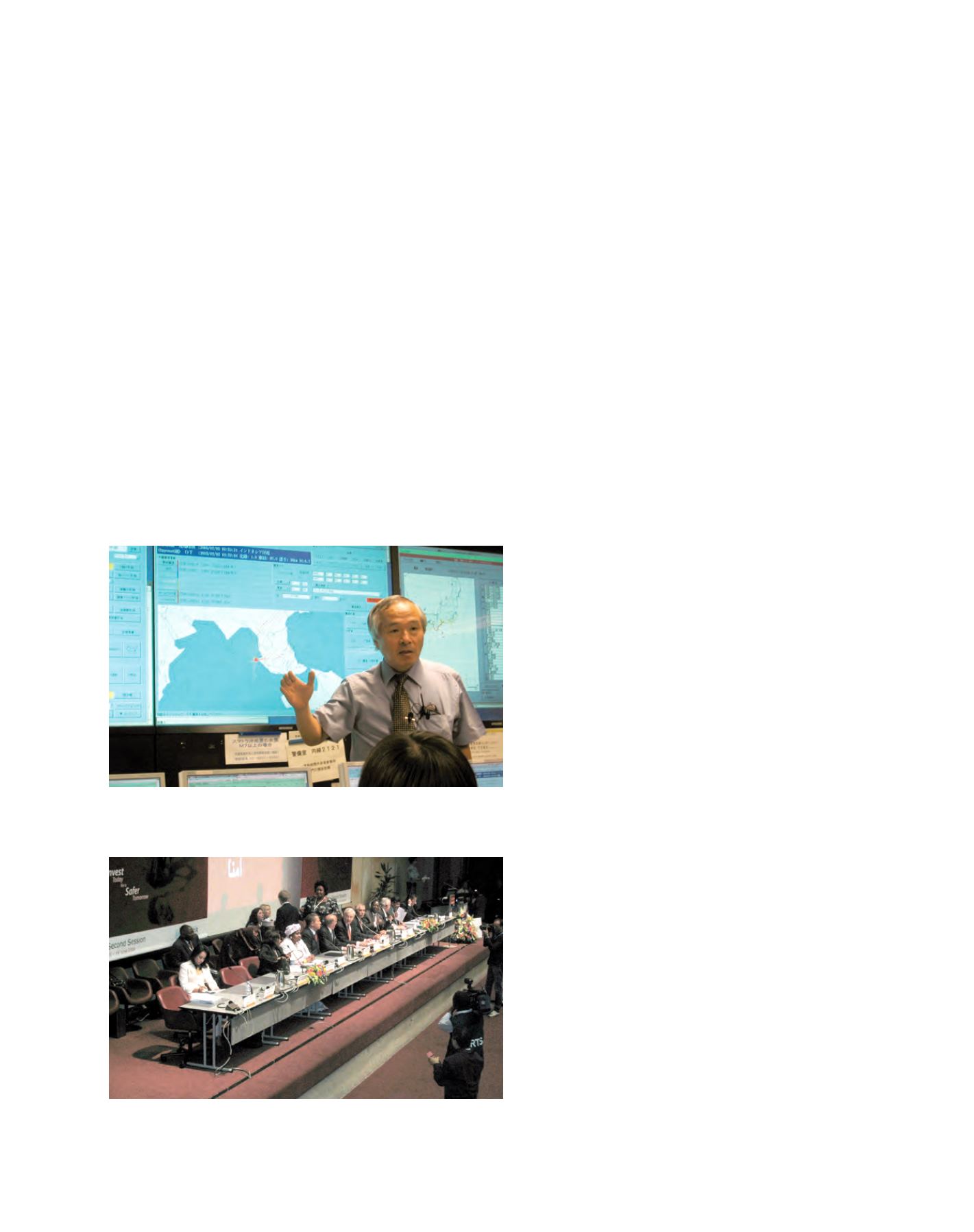

[
] 214
R
isk
G
overnance
and
M
anagement
The populated deltas, small island states, Africa generally, and the
Arctic region have been identified as the most vulnerable regions.
New insights into climate change impacts and their management are
expected from the planned IPCC Special Report onManaging the Risks of
Extreme Events and Disasters to Advance Climate Change Adaptation.
9
Proposed by UNISDR and the Norwegian government in 2008, the report
will provide an authoritative assessment of disaster risk reduction and
management policies and practices, including their effectiveness and
costs, and thereby a sounder basis for action on adaptation and disas-
ter risk reduction. Its preparation by the IPCC will involve hundreds of
experts worldwide and will be completed by mid-2011.
Disaster risk and the UNFCCC process
The Parties to the United Nations Framework Convention on Climate
Change (UNFCCC) now recognize that existing knowledge and capaci-
ties for coping with extreme weather events must be harnessed to adapt
to climate change. The Bali Action Plan’s directions for adaptation call
for the consideration of:
• Risk management and risk reduction strategies, including risk sharing
and transfer mechanisms such as insurance
• Disaster reduction strategies and means to address loss and damage
associated with climate change impacts in developing countries that
are particularly vulnerable to the adverse effects of climate change.
10
The Bali Action Plan also calls for vulnerability assess-
ments, capacity building and response strategies, as well
as integration of actions into sectoral and national plan-
ning. These points, together with specific reference to
the Hyogo Framework, are now part of the draft text
that negotiators are considering in preparation of a new
international agreement, to be settled in Copenhagen in
December 2009.
For its part, the UNISDR secretariat supports the
UNFCCC processes by convening processes to provide
ISDR-wide coordinated submissions to UNFCCC
Parties on disaster risk issues and practical adaptation
methods and by assisting disaster risk reduction experts
to accompany their national delegations to UNFCCC
meetings. It also organizes partner side events at these
sessions and encourages links between adaptation and
disaster risk reduction groups in countries.
Building data foundations for adaptation and disaster
risk reduction
At the local scales where local governments, enterprises
and communities mostly operate, climate projections
are very uncertain. Effective adaptive action therefore
remains highly dependent on the available foundations
of historical climate data and analysis. Risk assess-
ments, early warning systems, sector risk management,
insurance tools, and public education, for example, all
rely on such factual information. The patterns of past
climatic variability, over time and across local geograph-
ical features, are essential to interpret the global model
projections and to generate future climate scenarios for
testing different decision options.
Most developed countries are well equipped for the
task: having national monitoring networks, databases
of historical data and good analysis capabilities. In some
cases, however, the effective use of these national resources
is unduly restricted by shortsighted user-pays policies.
The situation for developing countries is generally
much less satisfactory. Many have inadequate networks,
fragmented historical data resources, and minimal capac-
ities to maintain networks and databases or to carry out
analysis and advisory services. Given that developing
countries are predominantly those most affected by
disasters and will be most affected by climate change, it
is imperative that substantial new resources are put in
place to aid the development of their climate informa-
tion capacities.
The issue of vulnerability to natural hazards and disas-
ter risks will remain central to the discussions leading to
the UNFCCC Conference of Parties in Copenhagen in
December 2009. While climate change undoubtedly will
increase the hazard threat, it will also raise awareness of
disasters and galvanize commitment to action against their
root causes. Immediate action conducted under the guid-
ance of the Hyogo Framework will make societies safer.
With the support of science, it is possible to simultane-
ously provide adaptive capacity, increase resilience to future
threats, and reduce the current unacceptable and growing
levels of disaster risk.
Political commitment to cutting disaster risks is growing – the 2009 Global Platform for
Disaster Risk Reduction attracted heads of state and governments to tackle the problem
Image: Reid Basher
The monitoring networks and analysis centres of the Japan Meteorological Agency keep
track of multiple hazards and provide timely warnings to those at risk
Image: Reid Basher
















